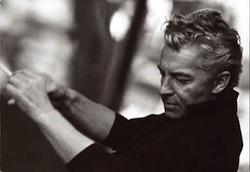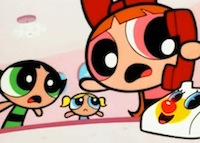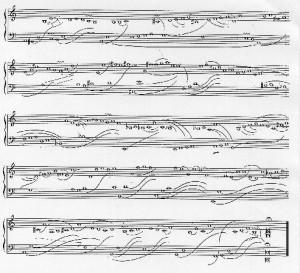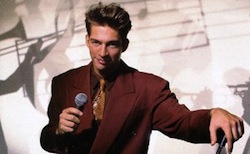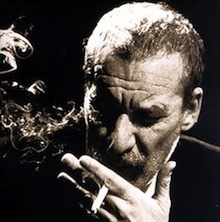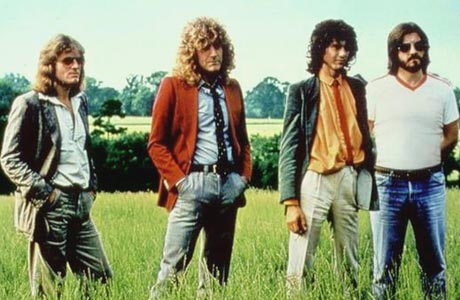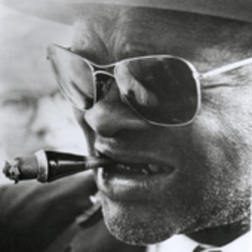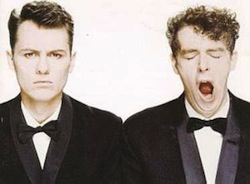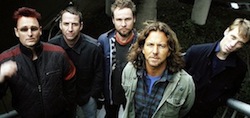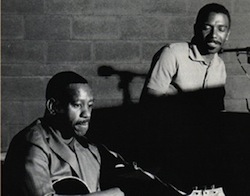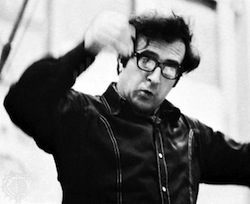Archive for February, 2010
Day 39. Beethoven and the Powerpuff Girls.
Sunday, February 28th, 2010Day 38. Louis Couperin.
Saturday, February 27th, 2010Louis Couperin (part of the same family as François) lived to 35, and was best known during his lifetime as one of the most important keyboardists in Paris. None of his music was published during his lifetime, but he is often credited as the creator of the baroque French harpsichord tradition. While I am much more familiar with François’s music, I came across some of Louis’s music while I was preparing for my doctoral exams. The ‘unmeasured prelude’ – a prelude that was written down rather then simply improvised – brought about a significant change to the composed suite. While the suite consisted pretty much entirely of dance movements before L. Couperin’s time, the idea of notating the prelude brought about a significant change… composing the what would traditionally be seen as improvised of course provided the opportunity to play with the idea of compositionally showing off before the more traditional movements would begin. While they mostly consisted of figurations of changes of harmony, the notation itself was particularly beautiful. Mostly just whole notes and slurs that showed phrasing. I find the pages of these works that I have seen as being fairly avant-garde, even for modern times. Here is a work within a musical tradition that had become rather measured and rhythmic, and it removes this rhythmic aspect quite brutally. Surely these ‘whole notes’ could not be performed as whole notes at any sort of reasonable tempo. The notation implies a flexibility of execution, and at the same time a sense that these notes overlap and build up texture. I imagine his work as an organist influenced these notation decisions (in the same way that Bruckner’s organ playing influenced his orchestration).
The five discs I have were a box set I found used for $20. It features 133 movements that make up Louis Couperin’s knows works for harpsichord. They are great pieces and they are also the work that will lead to greater works later in history. As with most composers who die young but leave a large impression, I wonder what Louis’ career would have led to. Would there have been other innovations? Other attempts to capture in notation what performers do when they realize works out of thin air? Would he have been seen as ‘Le Grand’ Couperin rather then François? And why should I feel a need to wonder these things? He is seen as the father of one of the grandest traditions of the Baroque period – not to shabby.
Day 37. Harry Connick Jr., and Paolo Conte.
Friday, February 26th, 2010Tamiko and I first heard Paolo Conte in the movie ‘A Couch In New York’ where ‘Via Con Me’ is used a couple of times as a mood setter. A greatest hits collection came out here in the US a couple years after the movie and I was able to pick up a promo of it. The rest of the disc mostly consisted of cool vocal jazz standards mostly in Italian with smatterings of English here and there… but it was all fun. There are a couple songs on this disc that are dangerous to listen to though. ‘Happy Feet’ WILL get stuck in your head… ‘Boogie’ probably will as well, and since it is mostly in Italian I usually just find myself phonetically making up words to go along with the song. Until the chorus:
HAPPY FEET! DADADA HAPPY FEET! DADADA HAPPY FEET! OH OH I LOVE YAH!
What is he singing about? The chorus doesn’t even make sense! But it doesn’t really matter… so much of his music is driving and infectious, and when there are words that are familiar I feel like I just need to sing along with them.
Whenever I hear him I tend to think about ‘Couch In New York’ which really is a sweet movie. Or rather, I think about me and Tamiko cuddled up on a couch watching it. So I think it is kind of funny that the other artist tonight (who was next to Paolo Conte on the shelf) was Harry Connick Jr. And of course I am talking about ‘When Harry Met Sally’ which takes me back to the earliest years of me and Tamiko dating. We have always been home bodies, and prefer PJs and a movie to going out (especially once we had our own place!). And for New Years Eve, we had a tradition for some time of watching ‘When Harry Met Sally’ up to midnight. I imagine I would have liked Harry Connick Jr. even if he hadn’t done the soundtrack to the movie, but he adds so much to it that I know I liked him more because of his association to it. There is a nostalgia for an older New York in his Sinatra-esque earlier style, and as ‘complicated’ as the story for ‘When Harry Met Sally’ seems to be, it is really very simple and elegant (much like the older couples who are telling their stories throughout the movie).
The three albums I ripped tonight were ‘We Are In Love’, ‘Lofty’s Roach Souffle’ and ‘Red Light, Blue Light’. ‘We Are In Love’ really does seem to try to be a Sinatra record, even down to the Nelson Riddle sounding orchestra in the background. Not much of the New Orleans Harry Connick shows up on this disk. But it is actually a smaller group recording of ‘It’s Alright With Me’ that I think is the stand out track on the disc. Russell Malone has a great role in the tune… starting off with a great strumming accompaniment that leads into a pretty hot guitar solo that is reminiscent of Atlantic Records John Coltrane. Then Shannon Powell and Ben Wolfe trade some short bars between each other before Harry Connick gets his turn. And he really can play some good piano. Part of the reason I think this is my favorite track on the disc is because it really focuses more on the playing of each member of the group (where I feel like the rest of the album is more of a vocal album that feels more like Frank Sinatra). And there is nothing wrong with the singing… but it doesn’t feel as unique to me.
‘Lofty’s Roach Souffle’ was released at the same time as ‘We Are In Love’ (certainly capitalizing on the ‘When Harry Met Sally’ success from the year before). I don’t necessarily think it is a stronger disc musically, but I like listening to it quite a bit more. ‘Lofty’s’ is a trio only disc, and I think you get more of the musicianship that is evident on ‘It’s Alright With Me’. You certainly get much more piano playing and I think that is a good thing.
I still remember the first time I listened to ‘Red Light, Blue Light’ quite vividly though. I got it to surprise Tamiko with, but had to listen to it when I got home from work. So I cracked it open and it starts of with a soft little clarinet melody… and I though my stereo was just turned down low. So I turn it up just in time for the HUGE big band blast. I shot back away from the stereo (I’m a pretty jumpy guy) and landed on my bed, then scrambled to turn the stereo back down again before my speakers blew up on the next hit. The orchestration on this album seemed to be a little more fun to put together then ‘We Are In Love’. Little looser in some ways, and certainly a bit showier. Lots of fun though.
Whenever I put these discs on, the nostalgia I mentioned earlier certainly kicks in. In many ways, these are part of the soundtrack of the early years of Tamiko and Josh (and I even remember putting some of these tracks on the discs that would be played when the band at our wedding was taking a break). Tamiko has asked me a number of times what songs would be on the mix disc of our relationship. The version of ‘A Nightingale Sang In Berkeley Square’ (with Branford Marsalis singing along with Harry Connick Jr.) would certainly be on that disc. And we’d be in sweats, all cozy on a couch, listening to the song. And ‘Heavenly’ would be the next track – sure, that breaks some serious mix disc rules, but the two songs really do belong right next to each other.
Day 36. Led Zeppelin.
Wednesday, February 24th, 2010‘The New Yardbirds’ was supposed to be a super group featuring Jimmy Page and Jeff Beck (from the Yardbirds), members of The Who and Steve Winwood. What Jimmy Page got was Robert Plant, John Paul Jones and John Bonham. Jimmy Page lucked out.
I imagine I could spend pages and pages on Led Zeppelin, and obviously MANY have written entire books. Yeah – they rock. Yeah – they had some great songs, but they also had their share of poor ones. How could the same group show off John Bonham with ‘Moby Dick’ and then record something like ‘Bonzo’s Montreux’ (which seems to say ‘his drumming is great, but listen to these electronic sounds and voices we can mix in too’)? As a band they certainly had their share of the good, the bad and the ugly (sorry classic rock stations, but ‘All Of My Love’ should never be broadcast ever again… really, the song sucks). But the good could be really really good. And the majority of their work IS good, so it is not too surprising that they are a legendary group. And as a group of musicians, all four of these guys should be in just about any serious rock lovers top 10 lists for their instruments. And while Jimmy Page and Robert Plant were the most visible members of the group, I would be hard pressed to think of a drummer that is/was better then John Bonham, and I think John Paul Jones may be one of the best rock musicians ever. He is an amazingly versatile and rock solid performer who was able to cover just about any instrument need the group had … he was a great bassist, but was also able to easily handle keyboards and mandolin. And he is still going! I remember being impressed with his album with Diamanda Galas back in the 90s, and now he is playing with Dave Grohl and Josh Homme!
I guess after reading the above, I can probably say that John Paul Jones was my favorite member of the band. I have ‘The Lemon Song’ playing right now… and I certainly remember learning the bass part to this song after I switched from guitar to bass. And while just about any rock guitarist will mention Jimmy Page as a guitarist they would want to play like, I imagine I am not the only bass player that heard this song (and ‘Dazed and Confused’ and ‘How Many More Times’ and ‘Achilles Last Stand’) and realized how cool being a bass player could be.
What is striking to me most of all about Led Zeppelin is how varied their work really is. Where The Beatles had a trajectory over their studio albums that evolved into more and more complex musical work, Led Zeppelin showed a great amount of stylistic variety on just about every album they put out (and they benefitted pretty much immediately from the studio techniques that The Beatles, The Beach Boys and Pink Floyd had already created). They aren’t just heavy metal’s grandfather… traditional blues, american country and folk, Celtic folk and Indian influences all show up within just the first couple albums. And if you played someone Led Zeppelin III (leaving off ‘Immigrant Song’), how many people would believe you if you said this is the group that basically gets the credit for creating hard rock? And while Led Zeppelin does get more experimental as they gain more experience, there is quite a bit to be said already with the bluesy and dreamy feel that shows up in Led Zeppelin I as it ends with ‘How Many More Times’ (probably my favorite Led Zeppelin song). Led Zeppelin II then starts off with ‘Whole Lotta Love’ and it’s hyper-stereo psychedelic middle section that pulls back together into one of the most amazing guitar and drum conversations on record. So of course the band rocked… but I also love how much of everything else they could be. And that being said – I think I’m going to throw on ‘Battle of Evermore’ and get to bed..
UPDATE: How many better side 1 track 1s are there then ‘Black Dog’??? man…
Day 35. Cowabunga!
Tuesday, February 23rd, 2010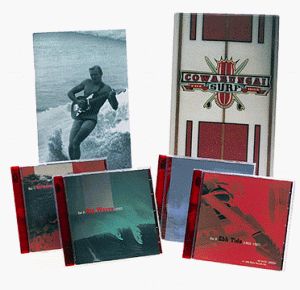 The ‘Cowbunga Surf Box Set’ looks like a surfboard. There are even textured speckles on the front that mimic a surfboard’s texture. Rhino, in general, does a great job with box sets. This one was pretty much well done overall. And my guess is that it exists because of the ‘Pulp Fiction’ and Quentin Tarentino’s nod to surf and hot-rod music.
The ‘Cowbunga Surf Box Set’ looks like a surfboard. There are even textured speckles on the front that mimic a surfboard’s texture. Rhino, in general, does a great job with box sets. This one was pretty much well done overall. And my guess is that it exists because of the ‘Pulp Fiction’ and Quentin Tarentino’s nod to surf and hot-rod music.
When most people think of ‘surf’ music they usually come up with ‘The Beach Boys’, and this of course would only be the early Beach Boys (and certainly not much beyond ‘Pet Sounds’). OR – Dick Dale (the king of the surf guitar!) comes to mind. For the most part I do like the early Beach Boys stuff, and it is represented in the box, but I LOVE the mostly instrumental and heavily reverbed music of ‘The Lively Ones’, ‘The Sentinals’ and ‘The Astronauts’. I’d take ‘Pipeline’ over ‘Surfin’ USA’ any day. Most of the set focusses on the 60s, but the last disc covers 20 years of surf as it changed through the 70s to the 90s. ‘The Mermen’ get a nice nod with a live rarity.
When I worked at Blue Note Music selling guitars, we had this great used and pieced together Fender Strat and a Music Man Twin Reverb knockoff that had a great California surf sound. It would have cost me probably $300 for the pair, but I was barely scraping by with tuition and rent. The both of them sat there for months and I would play them pretty much whenever I wanted, but I was so heart broken the day I came into work to see them missing. I never did find such an ideal surf guitar / amp combo again… something about the pickups in the guitar and the spring reverb just matched on those two pieces… oh well… Still, when I picture myself finally getting another band together, it is always a surf group playing dense, modal melodies over pounding drums.
Day 34. Rev. Gary Davis.
Monday, February 22nd, 2010Pulled three albums tonight from the Rev. Gary Davis. These are ‘The Guitar and Banjo of Rev. Gary Davis”, “Harlem Street Singer” and “Have A Little Faith”. Not a terrible amount to say tonight (it’s been a long day), but they are all great albums. ‘The Guitar And Banjo” disc is particularly interesting though if you haven’t heard anything by him before though. All the tracks are instrumentals and at times it sounds like two or three guitarists are playing. Also interesting to me is that on these recordings, it sounds like they were done with a very close microphone. You can practically hear the pick on the strings – and in many of these songs, he is hitting the guitar hard. So much so that on some tracks it feels like there is actually space between each note of a chord as a result of the time it takes for the pick to get one string going, travel through space and grab onto the next. I don’t know if I have ever heard this much detail in a solo guitar recording before, and it adds a weight to the tunes. His version of Scott Joplin’s ‘Maple Leaf Rag’ is very good, and once I hear his ‘United States March’ it will usually be stuck in my head for a couple hours. ‘Harlem Street Singer’ starts off with ‘Samson and Delilah’, possibly the version members of the Grateful Dead heard before recording it themselves on ‘Terrapin Station’.
Day 33. Pearl Jam, Pet Shop Boys and Singles.
Sunday, February 21st, 2010I would call myself a mild Pet Shop Boys fan. I certainly wouldn’t collect every disc of theirs, but I am sure I’ve heard them all at one point or another. I have a pretty good disc of their greatest hits, and while I can go years without hearing them I do have to say that I think ‘West End Girls’ is one of the best songs of the 80s. Yes, it sounds a little dated, but I think it has actually stood up better then a lot of the music from the ‘early synth years’. I can’t listen to anything off ‘Like A Virgin’ without wincing at the crap synths on that thing. But the Pet Shop Boys had some good songwriting, and some nice attention to sonic detail. And I certainly don’t slap my head and think ‘ugh – bad 80s music’ when I hear most of there stuff.
At the same time, hearing Pearl Jam right after the Pet Shop Boys helps remind me of how refreshing it was to hear some grittier sound in the 90s after the pristine sound of the 80s. If you don’t believe me, dig up ‘Appetite For Destruction’ and throw on ‘Paradise City’. Then listen to ‘Spin the Black Circle’ from ‘Vitalogy.’ by Pearl Jam. Which one, based on quality of sound alone, rocks harder? And I say this knowing quite well that Guns ‘n Roses was THE mega-rockin-band of the 80s. But all I can say with the above comparison is ‘thank goodness for grunge’ (and yes – I have listened to ‘Nevermind’ recently and yes – I do realize how slick it sounds).
I started to work at the Tower in Roseville the year ‘Ten’ came out. Before it really hit though I remember putting it on in the store and we would maybe sell one or two copies. We had like 5 copies on the shelf, and those lasted us for a few good months (we’d sell one or two a week then replace them). When the album hit however, I remember ordering 30 for our small little store (30 was a lot for the Tower in Roseville!). We sold those in a few hours after they came in. I then tried to order 150 copies… and it was already back ordered. Didn’t matter though, when those 150 came they lasted us maybe three days.
I still remember the store artist Jude putting up the display sign for the ‘Singles’ soundtrack (and Jude looked like he came off the cover of the ‘Singles’ soundtrack). The disc came out a good 4 or 5 months BEFORE the movie, and we played (and sold) the hell out of it. While ‘Ten’ was a good album, I remember liking the changes Pearl Jam had made by the time the soundtrack for ‘Singles’ came out (‘Rearview Mirror’ is still one of my top 5 Pearl Jam songs, if not my favorite). But the music on the rest of that soundtrack was amazing as well (especially the Smashing Pumpkins’ ‘Drown’, complete with four minutes of feedback and delay to end the song). Over the year or so after ‘Singles’ came out, I probably played that disc in my car 3-4 times a week. I also remember that during my senior year of high school, I was determined to move to Seattle. This was during the few months that Tamiko and I were broken up, and I figured getting into a school up in Seattle and getting a band going would be a great way to make a fresh start. Problem was, I spent more time being concerned with dying my hair then I did thinking about college applications. And a good thing too… since by the end of that school year my future wife and I were figuring things out and I was determined to move to the Bay Area with her. Seattle and my flannel grunge dreams would just have to wait.
One of my fondest record store memories though happened that year. I had moved to the Tower on Sunrise after the store in Roseville closed, and I remember staying open late for ‘Vs.’ the day it came out. At midnight we had a line of a couple hundred people there to buy the new disc, and we played it LOUD while people filed in. What a way to hear the new album – loudly in a large record store while you are selling it to hundreds of eager fans who all made it to Tower Records at midnight.
My friend Charles refers to ‘Ten’ as Pearl Jam’s stadium rock anthem album, and I can see that. But after ‘Vitalogy.’ came out Tamiko and I were lucky enough (through the non-Ticketmaster lottery system Pearl Jam was trying out) to get tickets to the show at Cal Expo in Sacramento. It was the first concert in some time that I wanted to go to and I wasn’t sure if I could get there (since I didn’t have the Ticketmaster machine at my disposal to grab some tix before the selling to everyone else). But we got a couple and the concert was amazing. The stage was filled with candles, and the warm early-summer Sacramento evening was a perfect back drop for the show. They played their asses off as well. The next day Eddie Vedder came down with food poisoning, and the day after that he only sang a few songs in Golden Gate Park before he couldn’t take it any more. Neil Young came out to finish the show (which I would have LOVED to have seen as well). But I remember that after that show, and the cancellation of most of the tour afterwards, I though that Tamiko and I had seen the last Pearl Jam show that would ever happen. The band talked about how the whole fight with Ticketmaster had drained them, and I thought for sure that they were done. I was quite glad to be proven wrong, and am amazed at the band’s longevity and creativity as their career reaches into its third decade (!). And as I work MY way through my third decade, I’m married to Tamiko with two great kids, living in Tacoma and working in Seattle. I may not be very grunge, but neither is Seattle really. And – I get to make music. It all worked out just fine.
Day 32. Jimmy Smith and Wes Montgomery.
Saturday, February 20th, 2010I really can’t remember the first time I heard Jimmy Smith, but it must have been after I moved to Berkeley and was working at the Tower Records there. My friend Felix may have mentioned him to me… Felix suggested a lot of jazz to me during my years at the Berkeley store. The first disc of Jimmy Smith’s I picked up was ‘The Sermon’ (which I’ll talk about whenever one of the girls grabs it), but I became fanatic about Jimmy Smith and would pick up a disc or two every pay check for a couple months. When Celia grabbed the two Jimmy Smith / Wes Montgomery albums I have, I was actually surprised how much Jimmy Smith is on my shelf. No complaints here though.
Wes Montgomery was introduced to me from a former roommate James. James ran a guitar shop in Berkeley, and I rented a room from him when I first moved to the Bay Area for about a year. James played lots of jazz guitar, quite a bit of the variety that I generally disliked (Pat Methany, John Scofield, etc.) but ‘Fried Pies’ by Wes Montgomery was the thing he would mostly play when showing off archtop guitars in his shop.
There are a few discs worth of material featuring these artists together, and the style of the tracks fall into one of two categories. There are a number of tracks that are smaller groups that both artists generally performed with. And these tracks are wonderful. They have the typical Jimmy Smith shuffle, and both players seem to branch out a bit. But a number of the tracks feature big band arrangements that just feel stiff and awkward. Unfortunately, these later tracks interspersed with the good ones… so I am starting to wonder. Should I just keep albums organized as albums? Or should I set up playlists that are also my ‘corrections’: in other words, the way these albums should have been put together in the first place.
Day 31. Berio.
Thursday, February 18th, 2010Mira’s love of box-sets (or at least large spines) continues with the second set of Berio Sequenzas I have (on Mode records with other solo pieces), and she also grabbed the DG 20/21 recordings of ‘Sinfonia’ and ‘Coro’.
When I first started grad school, Richard Karpen would gather all of his students together every other week for a group meeting, and often we would listen to a piece and read a score. ‘Coro’ was one of those pieces. The opening five or six minutes begins like a song for voice and piano, then explodes into more typical Berio orchestral colors. I don’t mean the word ‘typical’ here to sound disparaging… but Berio’s orchestral writing has a clear, crisp sound that is one of the more recognizable voices in 20th century writing. His orchestration is almost like some of the great jazz player’s sounds – you can hear Coltrane when he plays tenor sax, and Dizzy Gillespie is the only one that sounds like Dizzy Gillespie. And in the same vain Berio’s orchestral writing can be identified… such a pristine and clear musical voice, even when expressing complex and dense textures. While I had been sent to Berio to look at solo instrumental writing already (mostly through the ‘Sequenzas’), seeing his orchestral scores (and his vocal writing in this piece, which requires the singers to be seated within the orchestra) presented a number of challenges to me. I had just finished an orchestral work a couple years before during by BA at Berkeley, and thought that one of the things I would be doing a lot of at UW would be writing orchestra works. At this meeting, where we all listened to ‘Coro’, the question was thrown at us… ‘Is there anything left for the orchestra to say that is new?’ … and if there is, how do we do it?
I remember thinking that innovation needs work, and that I couldn’t believe that there is ‘nothing left for the orchestra to say’. And I still believe that. The reality that struck me later that year though, was which orchestras want to try and find that new language? Gerard Schwarz (the director of the Seattle Symphony) talked to the music students at UW that year as well, and when asked why he doesn’t program more new music (or even give readings) he given a simple response… he said that he loved programming new music and he listed a number of composers that he liked to program because ‘they gave the audience familiar yet new sounds’. In other words, any composer that may be trying to find something new to say with orchestra won’t be getting played in Seattle while Gerard Schwarz was conducting. It was all ‘new music’ with a romantic voice. As his tenure comes to an end, I wonder if that will change? Are there examples of other major orchestras that do take an adventurous view? How many in the US would even perform ‘Coro’, a work now 35 years old and almost conservative by modern avant-garde tastes? Can a piece like this survive if it isn’t getting played? Is the recording it’s end all be all?
So it is no wonder that most composers work on solo or smaller chamber works. Personally, it is how my work gets performed. I would love to dive into a work for orchestra, but I also can’t imagine working on a piece that may never get played. While ‘Coro’ is a rarity in the concert hall, and we have to rely on a couple of versions to get an idea of what can be done with the work as far as interpretation goes, the Sequenzas have had a much more successful concert life. This second set I have features performances by Stuart Dempster (who the trombone Sequenza was written for) as well as Garth Knox and Irvine Arditti. Some wonderful playing in this set to say the least.
Day 30. Django Reinhardt.
Wednesday, February 17th, 2010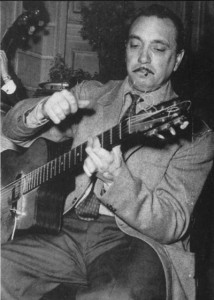 I have never been a huge fan of jazz guitar, with a couple of exceptions. Django is the big one. Such amazingly melodic playing on the one hand (actually – the hand with only two fingers that could play) and at times he treats the instrument like it is percussion. Such rhythm and drive.
I have never been a huge fan of jazz guitar, with a couple of exceptions. Django is the big one. Such amazingly melodic playing on the one hand (actually – the hand with only two fingers that could play) and at times he treats the instrument like it is percussion. Such rhythm and drive.
I came to Django Reinhardt through David Grisman. My dad had ‘Hot Dawg’ (an alum cover that for some reason freaked me out as a kid) and there was a version of ‘Minor Swing’ on it with Stephane Grappelli. When I got older, I realized the song was written by Django and tracked him down. As a teenage guitarist, he thrilled me. A little obscure, a really interesting life story, and his playing really can’t be compared to anyone else. He could do with two fingers on his left hand what most guitarists would probably need ten for!
During my first year working at Tower, I hit the motherlode – an import 10 CD box set that covered his whole recording career. I listened to those discs a lot, but there were two tracks that immediately struck me. They were two interpretations of the Bach D Minor concert for two violins… though at the time I didn’t know it. I just knew the track numbers and loved playing them. The interplay between the violinists was so intricate and the mood really swung (as I would figure out later these were called ‘swing interpretation of the Bach D Minor concerto’). I’ll never forget hearing the Bach concerto a year or so later on the radio and thinking ‘huh! It’s that Django Reinhardt song!’. When the announcer said it was Bach, I was quite surprised… got home and found the discs and sure enough it was Bach credited as the author. They had been playing Bach this entire time! So I went to the Tower on Sunrise in Sacramento (which had more classical music then the Roseville store) and I picked up the Bach violin concertos (which would then sit next to my only other Bach CD at the time – an old E. Power Biggs disc of organ work).
I love that listening to David Grisman led me to Django Reinhardt which then led me to Bach. The music world can have such strange connections sometimes, and that is really one of the wonderful parts of music for me. In our own ways, what we do musically is also a historical connection to music. I’ve studied with people who studied with people that studied with Schönberg, another who studied with Ravel. When I work on a piece with a performer, I also get to work with the things that their teachers and their teacher’s teachers taught them. And when I compose, everything I have ever heard is somehow influencing my musical thinking. And somewhere in there is Django, swinging my decisions.


